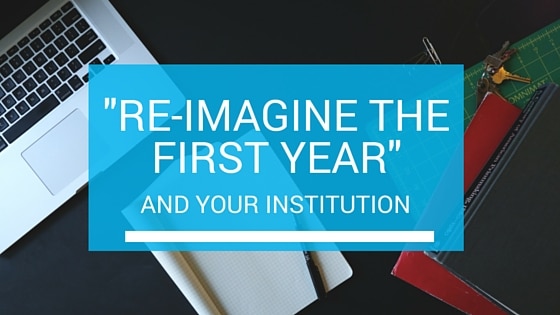According to U.S. News & World Report, 1 in 3 first-year students won’t make it back for sophomore year. Many higher education professionals will agree that the first year of college is a critical factor affecting institutions, as this is where most institutions experience the greatest loss of students. Many factors contribute to the success of a first year student, including family expectations, roommates and peers, financial issues, peer pressure and organizational adjustments.
To tackle this pressing issue, the American Association of State Colleges and Universities (AASCU) has launched a new project to support the success of all students, specifically those who have been historically underserved by higher education including low income, first generation and students of color.
The project, Re-Imagining the First Year of College (RFY) brings together 44 member institutions that will collaborate for the next three years to develop a new sustainable framework that redesigns the first year of college and emphasizes student success. For participating schools, that means not just analyzing current new student programs, but taking step back and looking at institution support for first year students as a whole.
So what might some of these adjustments look like? Here’s a glimpse at few participating schools and the steps they’ll be taking over the next three years.
To improve first year success, Harris-Stowe plans to help students connect the dots between their major and their future career through better advising. In addition, they’ll look to strengthen the faculty-freshmen relationship and make more data-informed decisions. “As an urban HBCU we have been committed to providing access and higher educational opportunities to underserved students”, said Harris-Stowe President Dwaun Warmack.
At Cal Poly, institution leaders plan to strengthen and grow their current flagship programs dedicated to new student success: Open House, Student Life Orientation Days, and Week of Welcome. In their strategy, they will focus on four main areas: institutional intentionality, curriculum, faculty and staff roles, and student roles. Brian Tietje, vice provost of International, Graduate and Extended Education, sees “a need to collaborate and better coordinate what we already have”.
California State University, Channel Islands
Across the institution, Channel Islands has seen great success in “high-impact” practices such as study abroad, community-based research and faculty-student research projects. This program allows CI to scale up these practices and build upon its first-hand learning experiences for first-year students.
Across the board, RFY will allow participating institutions to collaborate on the success of experiential initiatives, identify best practices and ultimately develop a framework that can improve first year student success throughout the country. To learn more about RFY, visit http://www.aascu.org/newsreleases/RFY/.
Each year, Comevo participates in the Annual Conference on The First-Year Experience, where it outlines the benefit of making first-year orientation as streamlined and accessible as possible. With online orientation, first-year students can have crucial information 24/7—no questions asked.






